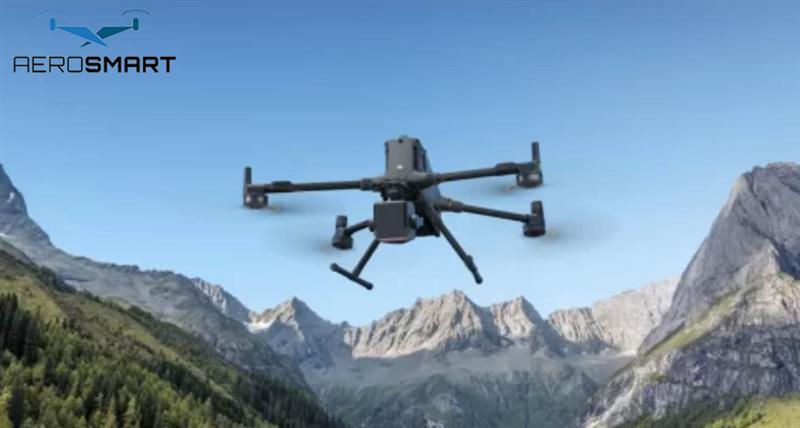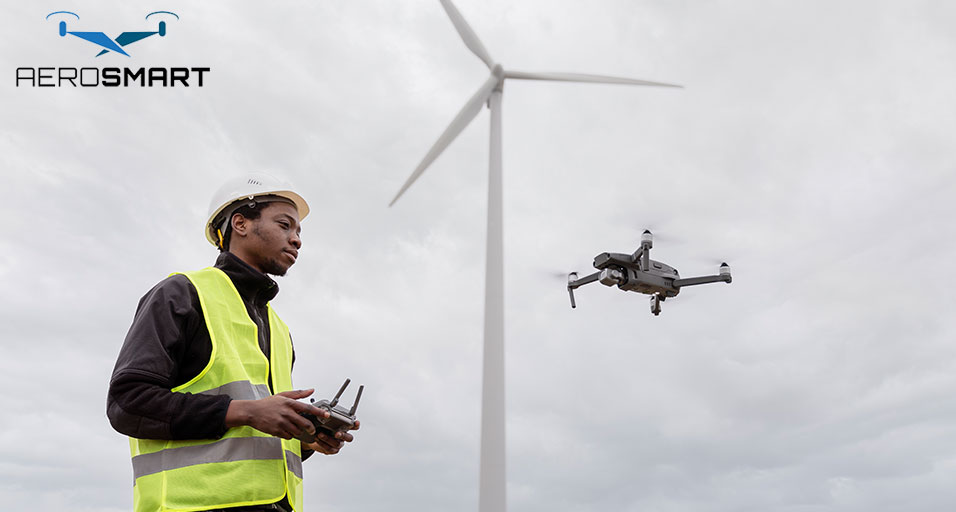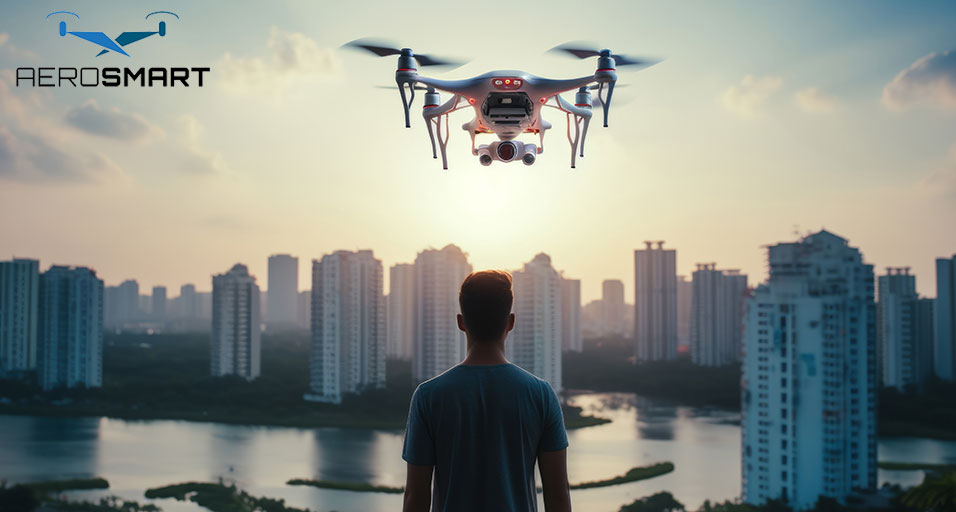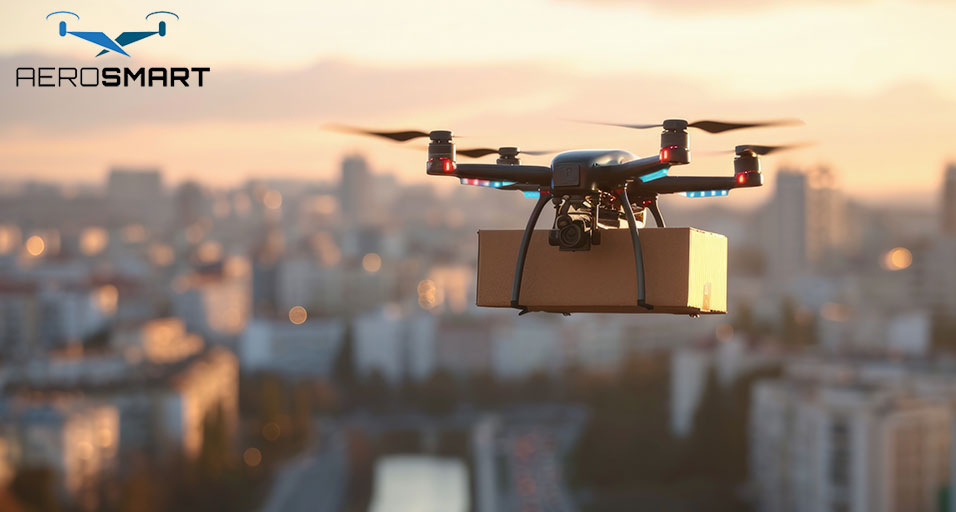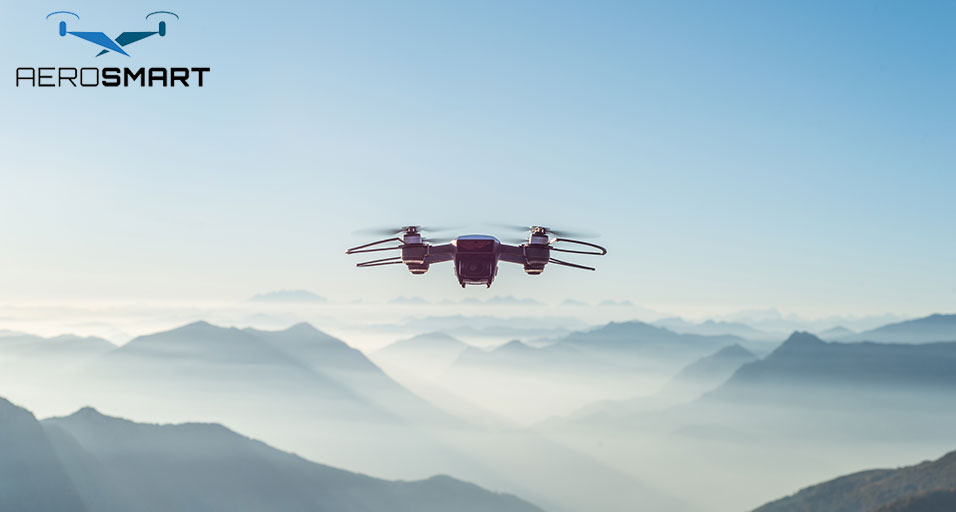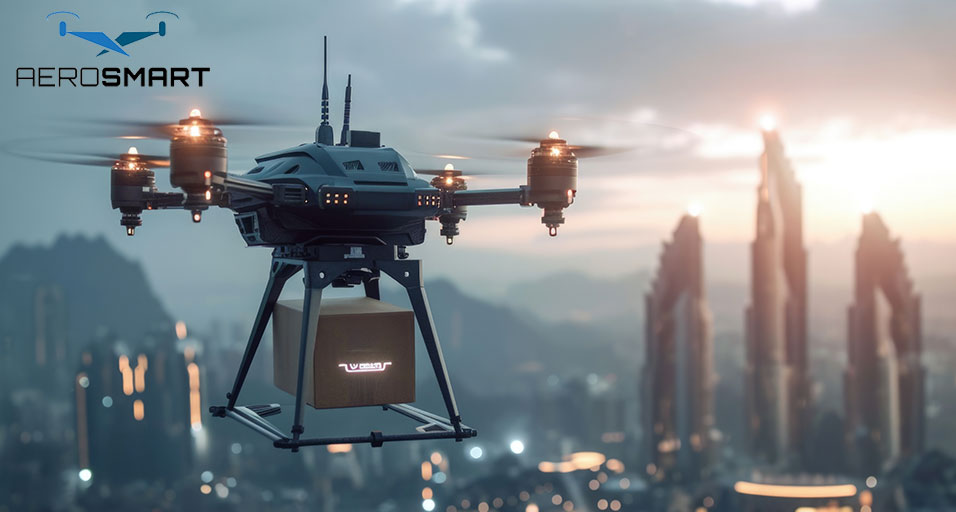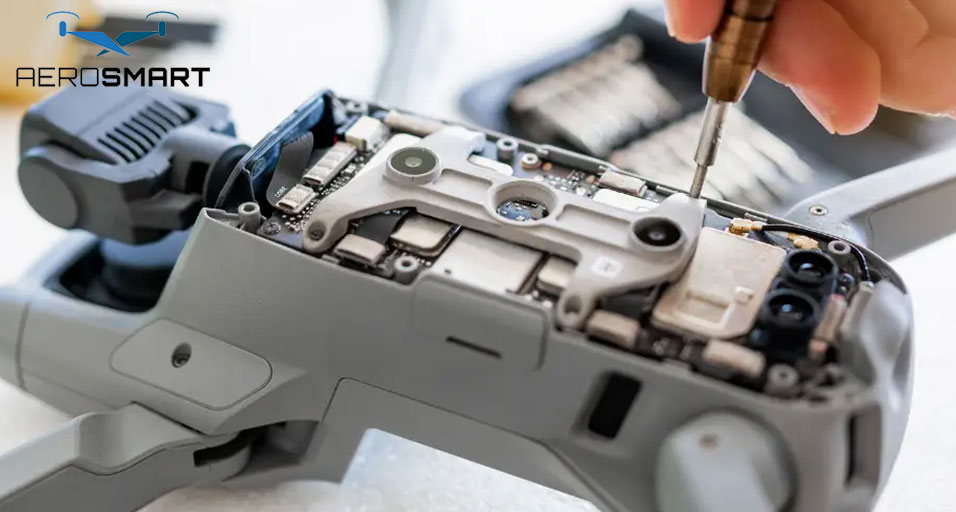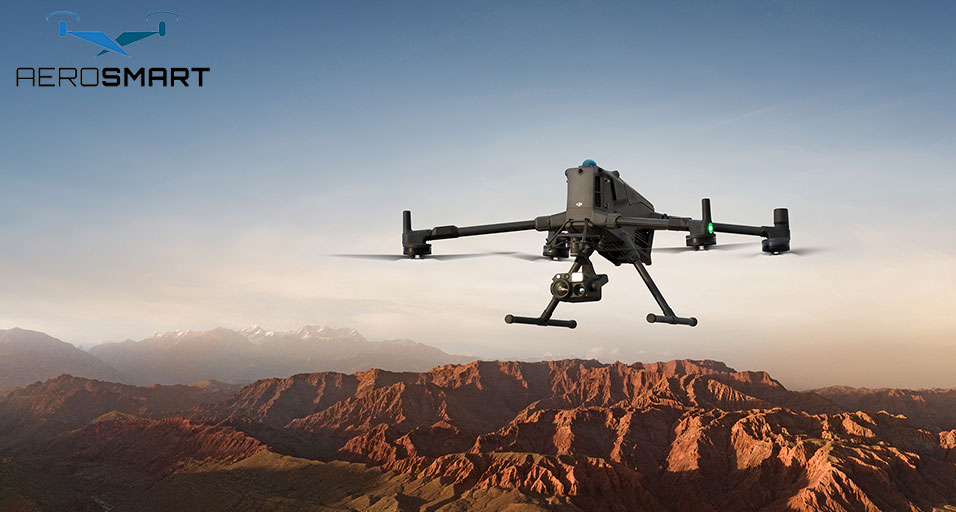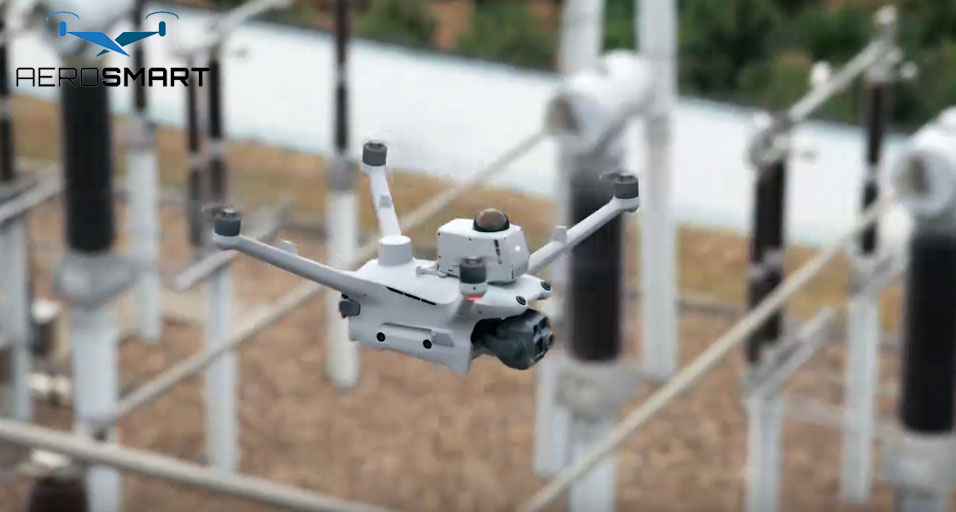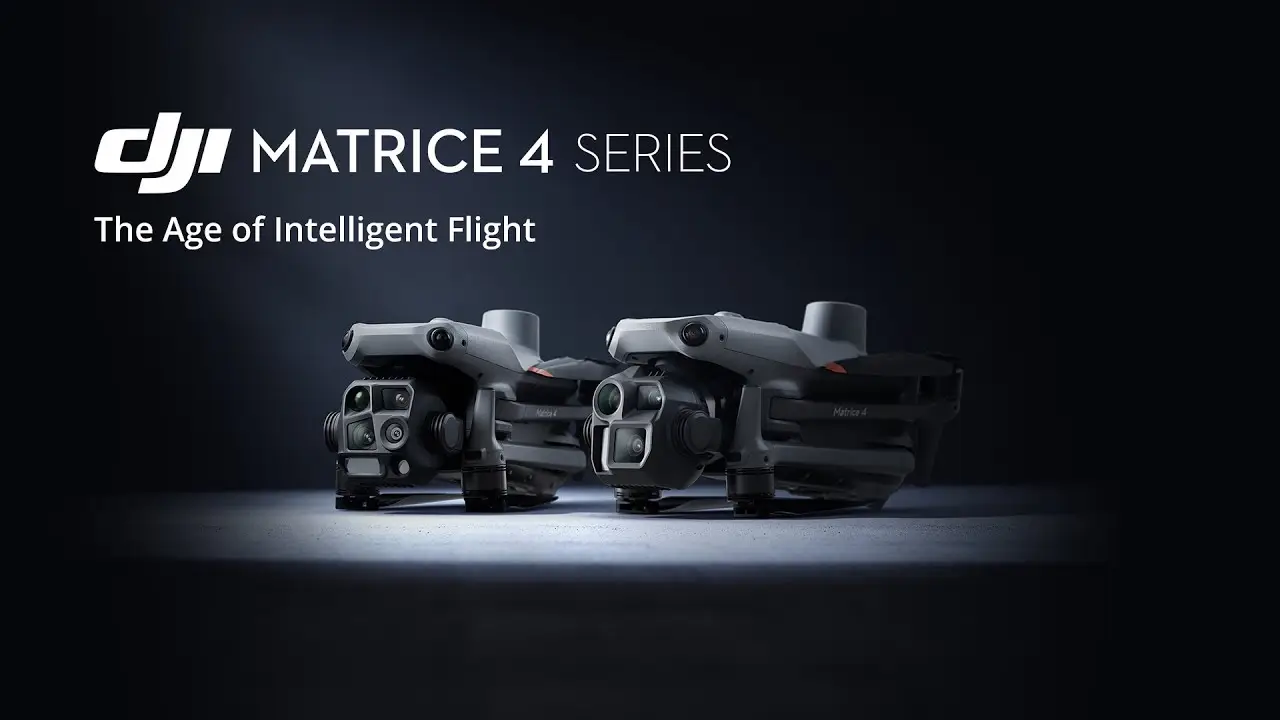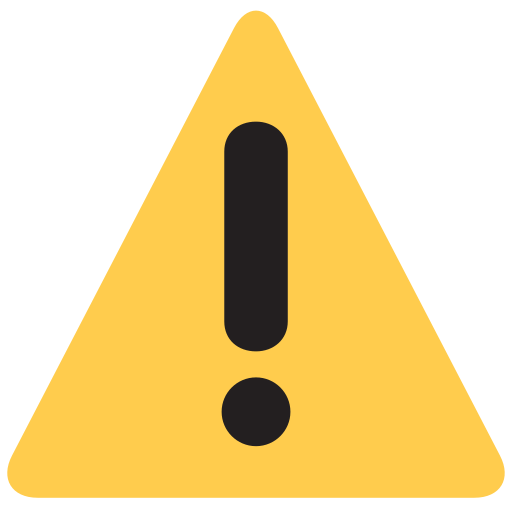Drone Flying 101: A Beginner's Guide to Getting Started with Drones
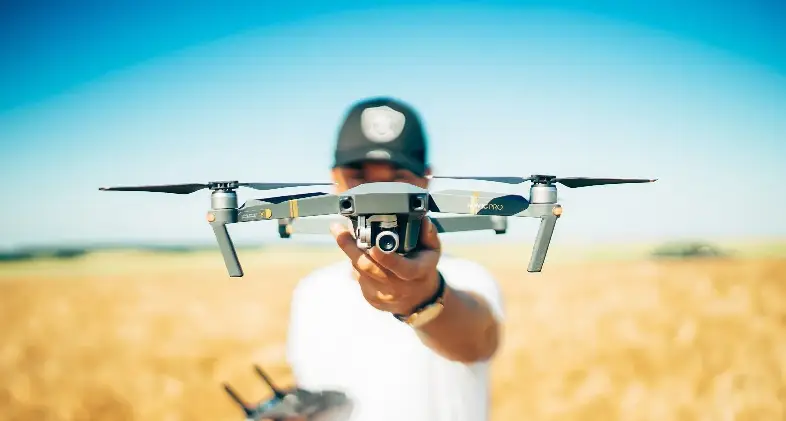
What Is a Drone?
Drone technology refers to aircraft which function autonomously because they lack a complete human pilot. A drone system operates either through remote controller inputs or from autonomous flight plans that it performs according to programming. Multiple types of drones exist in various shapes and equipment configurations, which allows users to select tools for recreational enjoyment and professional work needs.
Types of Drones
-
Consumer Drones: Consumer drones exist mainly for recreational enjoyment because they offer personal users’ opportunities to capture video and images while enjoying aerial drone flights. Aerosmart includes two key representatives which are the DJI Mini 3 and Autel Evo Lite+ models.
-
Enterprise Drones:Enterprise Drones exist to serve professional and industrial requirements. Enterprise drones provide operators with high-definition camera systems together with heat-detecting technology & AI processing solutions and the capability to stay in the air for prolonged durations. Aerosmart offers two leading enterprise drones on the market that are the DJI Matrice 300 RTK and DJI Mavic 3 Enterprise.
-
Racing Drones: The competitive drone racing league employs these drones due to their powerful speed capabilities, together with agile flying skills.
-
Military Drones: Used for surveillance, reconnaissance, and combat operations.
Choosing the Right Drone
When buying drones users must evaluate their experience level together with their intended usage requirements as well as their financial constraints.
-
Beginners:New drone users should purchase simple units that resist crashes while also featuring excellent camera performance.
-
Photography/Videography Enthusiasts: people who enjoy taking photographs and making videos should search for models with 4K cameras and gimbal stabilizers along with intelligent flight control systems.
-
Enterprise/Professional Users:Commercial and professional buyers should consider drones that come with thermal sensors together with LiDAR units and enhanced zoom functions to address their professional requirements.
Understanding Drone Components
The fundamental components of every drone include:
-
Frame:The body of drone elements, called a frame, includes all drone components.
-
Propellers: Provide lift and stability.
-
Motors:The drone receives its power from motors, which also control its movements.
-
Battery:Flight duration depends on battery capacity since a bigger battery capacity results in a longer flight duration.
-
Camera (optional): Used for aerial photography and videography.
-
Controller:Through its Controller device, a drone operator obtains the ability to maneuver the unmanned aircraft.
Learning to Fly a Drone
1.Understanding Controls
The standard controller interface for most drones includes these operating controls:
-
Throttle: Controls altitude (up and down).
-
Yaw:Rotation of the drone left or right can be achieved through the Yaw function.
-
Pitch:Moves the drone forward or backward.
-
Roll:The drone axis function, which allows the drone to bend left and right, is called roll.
2.Practice Makes Perfect
-
Start in an open space:Begin your flying operation in an unobstructed area that avoids contact with buildings and trees as well as densely populated areas.
-
Use beginner mode:The majority of drones provide beginner mode for operators that restrict both height and speed capabilities.
-
Practice basic movements:Beginners should practice controlling their drone through all its standard functionalities, including ascent and descent and horizontal and vertical flight.
Drone Laws and Regulations
Every nation establishes particular rules and regulations which control drone flight operations. Check all local drone regulations before every flight operation. Here are common regulations:
-
A drone weighing more than specific weight points typically requires registration under modern aviation laws.
-
The operational airspace must be maintained by staying clear of airport airspace and military areas along with restricted spaces.
-
Your drone must stay visible to you during every flight operation.
-
You must operate your drone at heights lower than the specified legal maximum which stands at 400 feet (120 meters).
-
Set privacy rules by avoiding flight over private land and need consent before documenting people with recorded imagery.
Enterprise Drones: Applications and Benefits
The modern industry stands transformed by enterprise drones, which bring sophisticated capabilities. Let's explore some key applications:
-
Agriculture
By conducting analyses drone systems perform crop health checks with multispectral cameras. Dronesuses precision techniques to execute pesticide as well as herbicide and fertilizer distribution.Aerial maps generated by drones allow farmers to optimize irrigation as well as land utilization decisions.
-
Construction & Infrastructure
Through drone operations site surveying becomes faster. The real-time construction status can be monitored through drone systems which automatically detect any progress delays.Thermal imaging on enterprise drones’ aids in detecting structural weaknesses together with building cracks.
-
Energy & Utilities
AI-powered drones are used for power line inspection, monitoring wind turbines and solar panels, and pipeline inspection to identify and address electrical infrastructure damage.
-
Logistics & Delivery
Drones are being used for medical supplies delivery, particularly in remote areas, and for e-commerce shipments, with companies like Amazon and UPS testing drone deliveries for speed.
Key Features of Enterprise Drones
Enterprise drones come with cutting-edge features to enhance operations:
-
AI-Powered Analytics: Automates data collection and processing.
-
LiDAR Sensors: Enables 3D mapping and precise measurements.
-
Thermal Imaging:Helps in night operations and detecting heat anomalies.
-
Swappable Payloads: Allows switching between different camera and sensor attachments.
-
Extended Flight Time: Some enterprise drones can fly for over 45 minutes per charge.
Training and Certification
For professional and enterprise drone operations, consider obtaining a certification. Many countries require drone pilots to complete training programs and pass exams before flying commercially. Certifications include:
-
FAA Part 107 (USA)
-
EASA Drone License (Europe)
-
DGCA Certification (India)
-
CAA Certification (UK).
These programs teach airspace rules, safety procedures, and operational best practices.
Conclusion
Drone technology extends beyond novelty purposes because it functions as useful equipment for business operations and personal needs. Everybody who operates drones must learn safe handling techniques and comply with established regulations while flying, either commercially or for personal use.
Modern businesses must acquire high-performance UAVs because their return on investment demonstrates exceptional benefits to operational efficiency and cost-effectiveness coupled with safety standards. The complete utilization of drones and their associated new technologies remains possible for you when you maintain awareness about modern advancements.
If you are someone looking to buy drones, you can visit Aerosmart. They have drones for every purpose.
